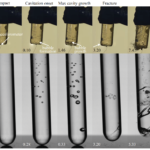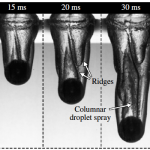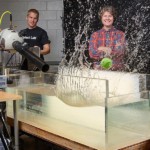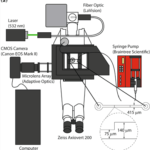Abstract:
Modeling of fluid mechanical systems benefits from and often requires high-fidelity three-dimensional data. This need has pushed experimental fluid dynamicists to look to other fields, such as computational imaging, for innovative measurement methods. Light field (LF) imaging is one (broad) method that has found traction in experimental fluids, mostly being used for three-dimensional velocity measurements in laboratory experiments. Levoy [1] provided a review of LF imaging, which involves sampling the intensity and direction of light rays intersecting a scene. Knowledge of the direction of individual rays – information that is not contained in a traditional camera’s image – allows for more information to be computed about the scene post-capture.
Of particular interest for fluids measurements is the ability to extract the depth of objects, which enables three-dimensional velocity measurements via particle image velocimetry (PIV). Several methods are available for sampling and post-processing light fields of particle-laden fluid flows. Multiple camera techniques include Tomographic PIV [2, 3], Synthetic Aperture (SA)PIV [4] and Defocusing PIV [5]. A single camera technique using a lenslet-based LF camera has also been demonstrated [6]. The hardware used to capture the LF sets the spatial and temporal resolution, which has been well explored in the relevant references. The accuracy and speed of algorithms used to reconstruct the 3D volume and extract data of interest are still benefiting from development.
We then apply LF imaging to the quantification of several potential applications. For instance, imaging flames in 3D. Fuel is only burned in a small part of the flame called the flame front. Turbulent flames contain flow structures that can strain the flame front to the point of localized extinctions, allowing unburned fuel to pass through without burning. A more accurate understanding of the turbulent flow field can increase our knowledge of when and were these extinctions might occur and potentially increase fuel efficiency. However, measurements of flames are often inaccurate as the flame temperature gradient causes spatial variation in the RI, which has not been properly accounted for in many published velocimetry studies. We use LF imaging to reconstruct the visual hull of a flame. The error that can arise in velocity measurements due to the RI gradient is then assessed.






Recent Comments